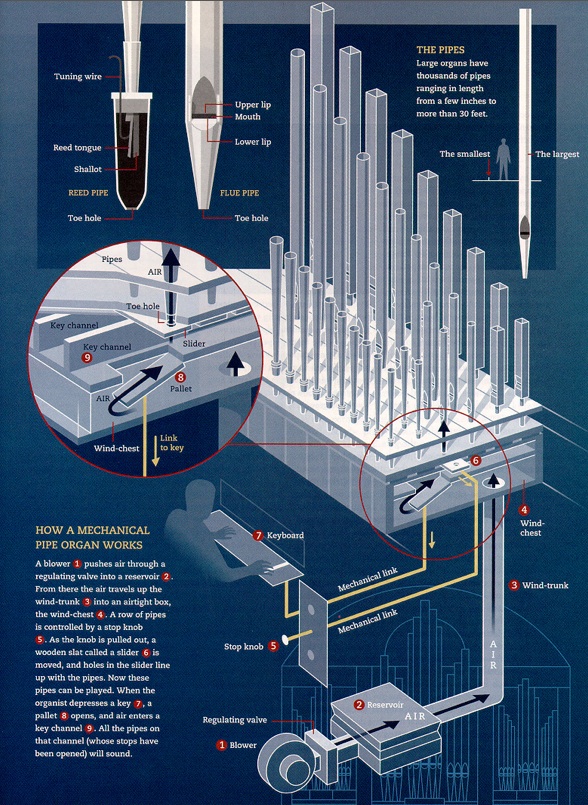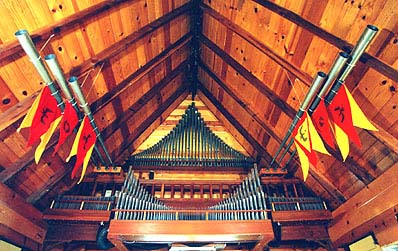
Its history, how it works, its physics.

..... The Hydraulis, used the weight of water to a give steady wind supply.
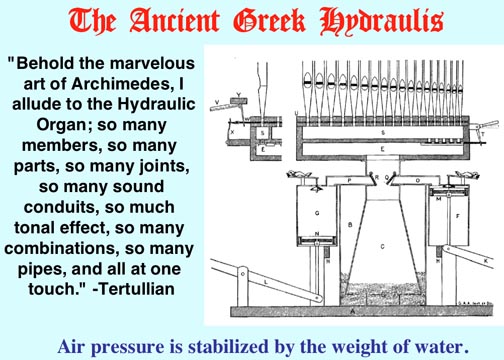
..... Key action linked by levers, trackers (which transfer the key action to the valves in the windchests), and squares (which change the direction of the trackers). Bellows reservoirs maintain steady pressure.
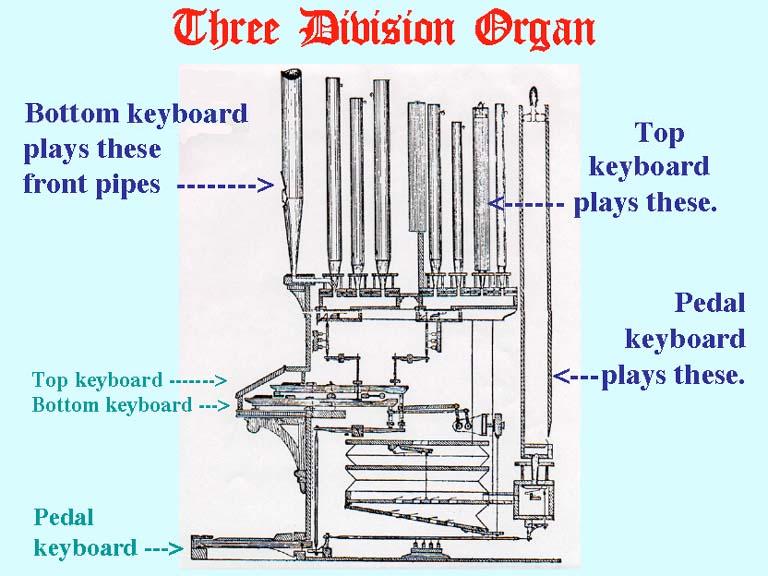
..... Pumpers at their bellows. Large organs had many pumpers.
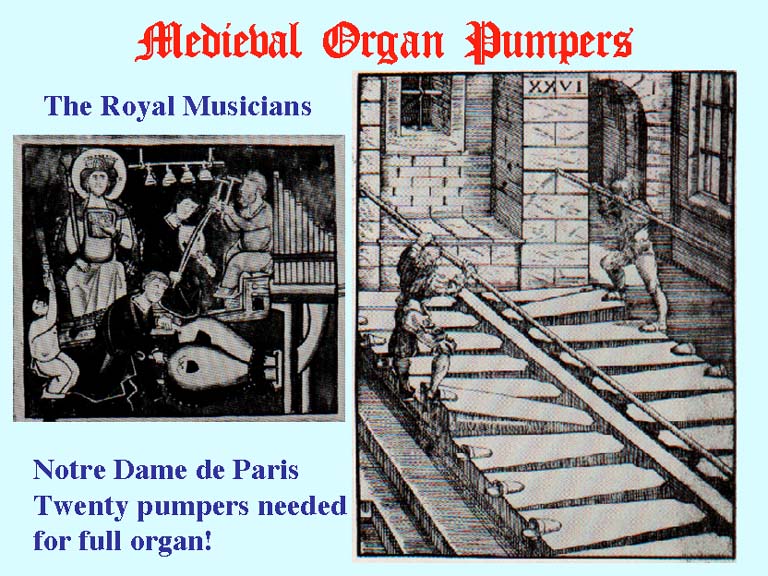
..... Hydraulis with Pumpers being lectured on smooth pumping.
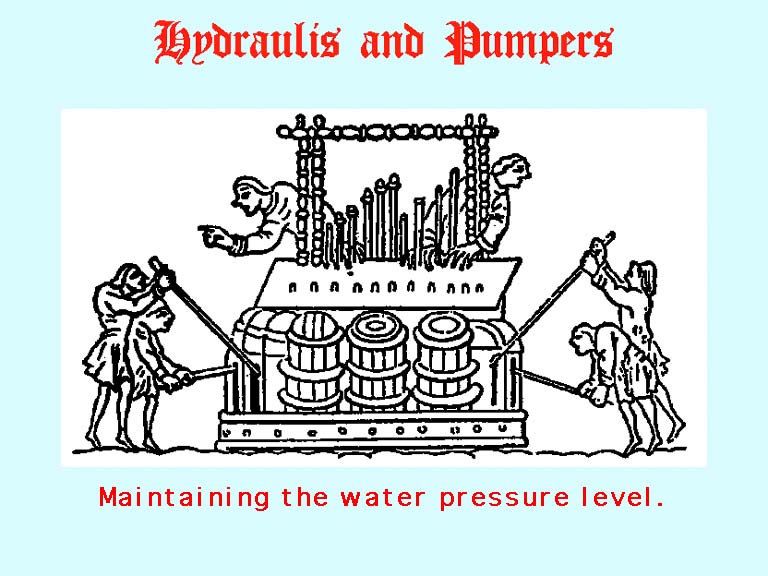
..... Bellows and pumper providing the wind supply.

..... Pipes, windchest, action, and wind supply.
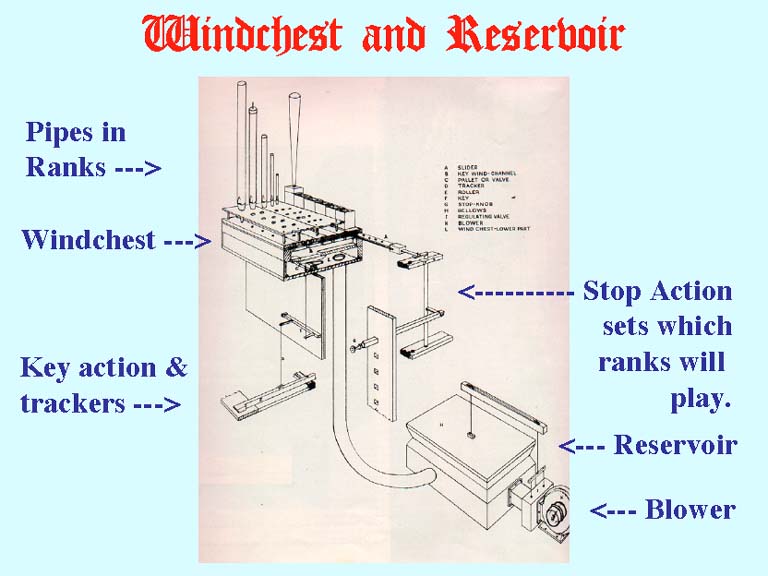
..... Levers and valves in action to open the pallets (valves) in the windchest.
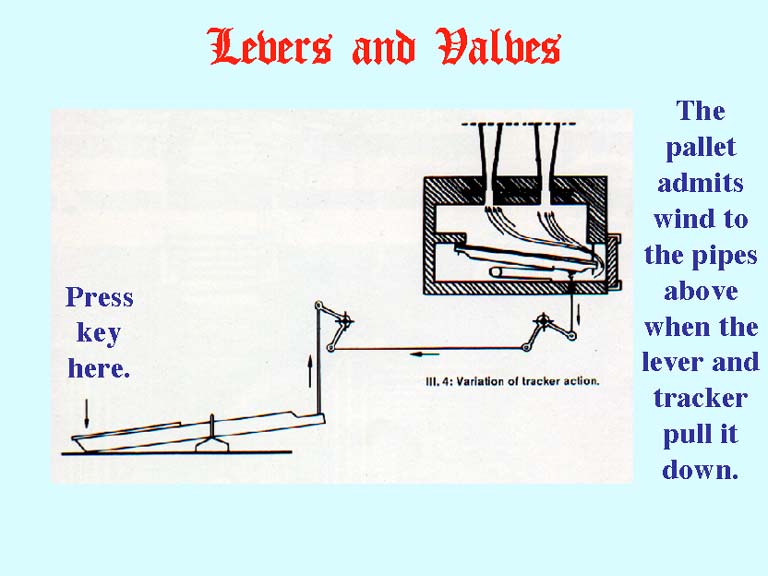
..... Flue pipes are simply whistles that are carefully voiced to give certain sounds. The length of the pipe determines the pitch of the note being played.
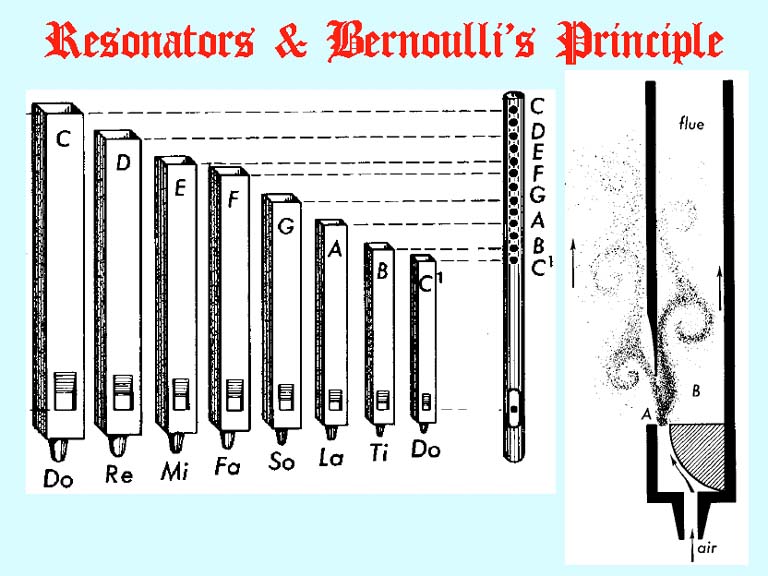
..... Resonators and Harmonics
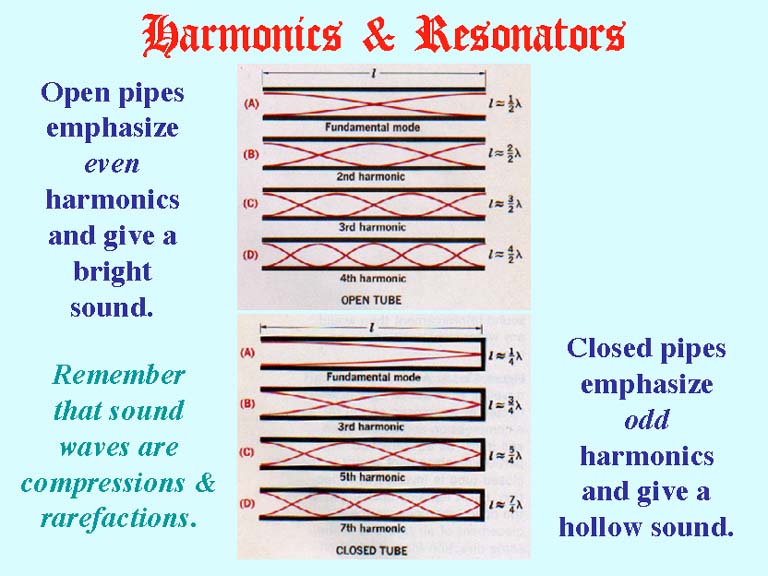
..... A variety of pipes to give a variety of tones.
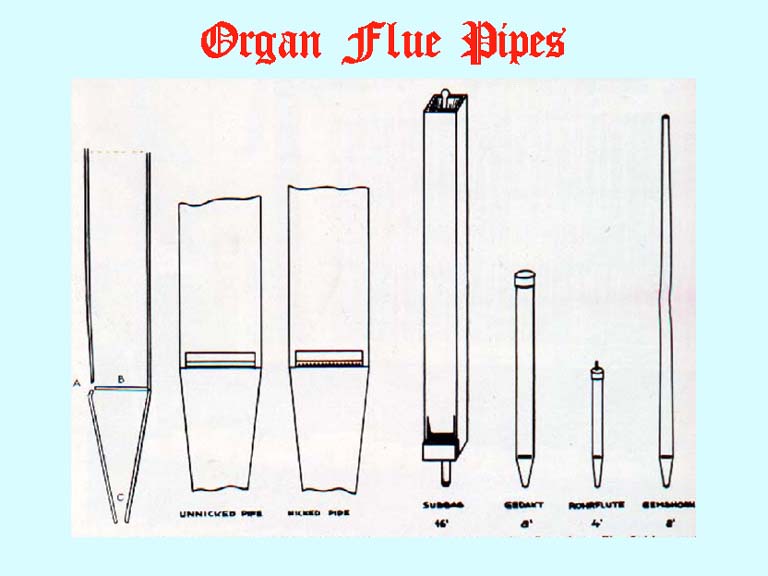
..... Reed pipes use a vibrating tongue of brass to generate the tone.
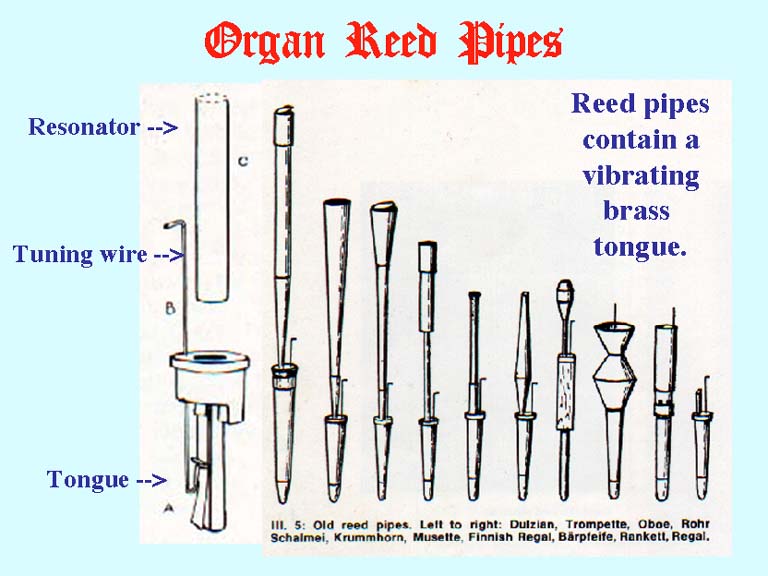
..... Slider chests, pipes, and pulldowns admit the wind into the pipes according to how stops are set. The stop knobs move the sliders to control which rank of pipes will play when valves are opened by the keys.
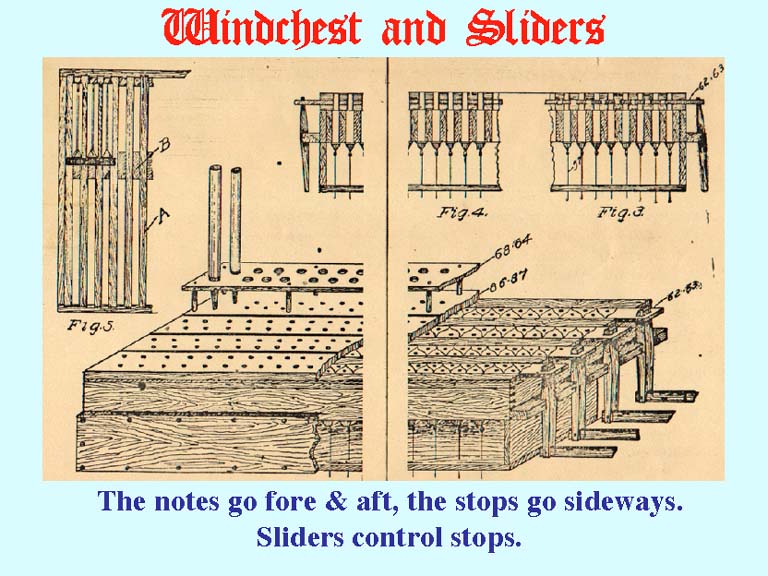
..... A large console. Each keyboard is an independent organ with its own sets of ranks of pipes. Several keyboards allow for a quick change of tones that have been programmed by setting combinations of stops. Or a melody may be played on one keyboard while an accompaniment is played on another keyboard.

..... Trackers and roller boards control the action.
![]()
..... Windchests and stop actions.
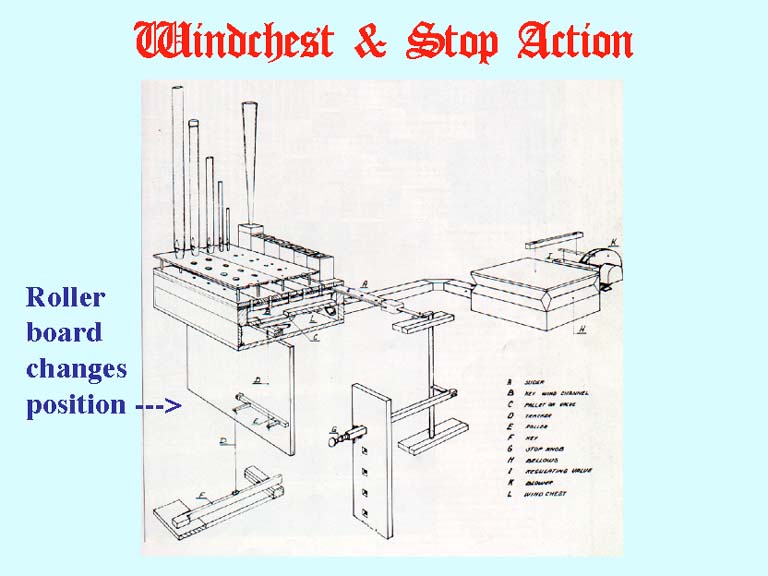
..... Flue and reed pipes on windchests.
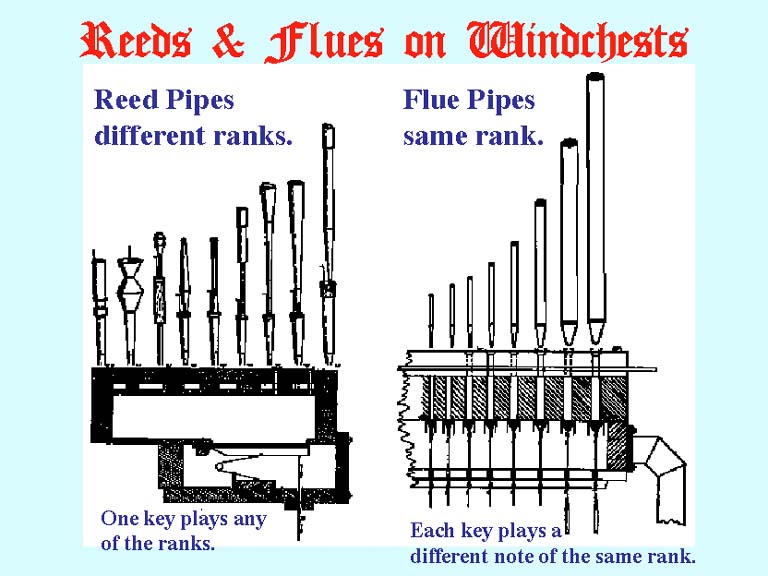
..... Many ranks ready for action. Each rank makes a different sound. (Like a flute, or a trumpet. The principals make the so called, organ sound.
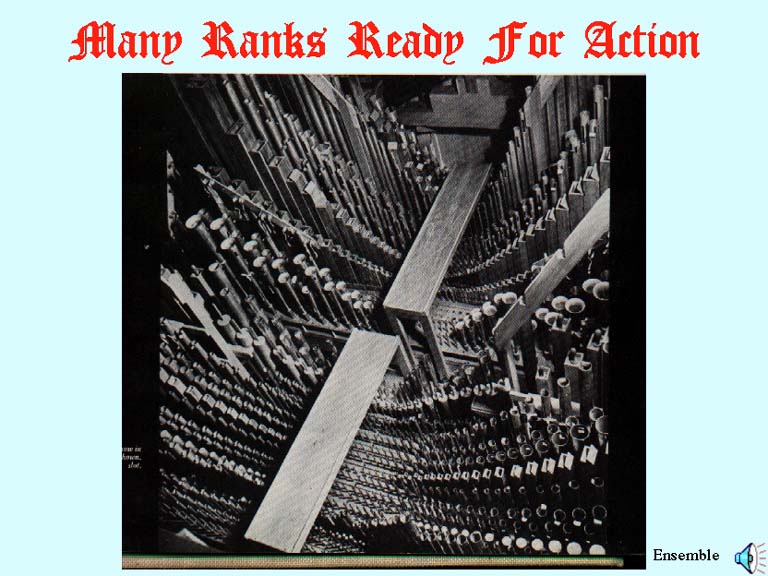
..... A view from the rear.
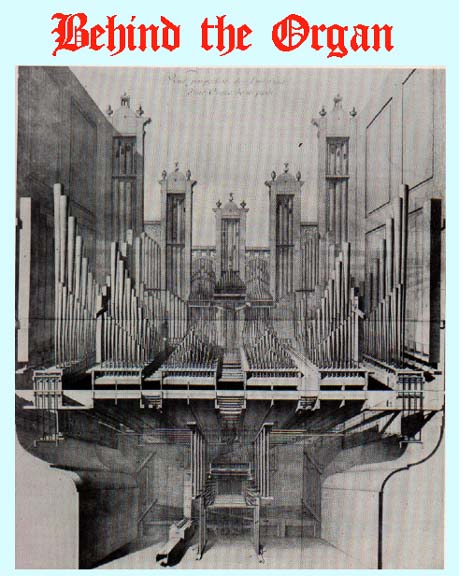
..... Principal pipes of Boomeria.
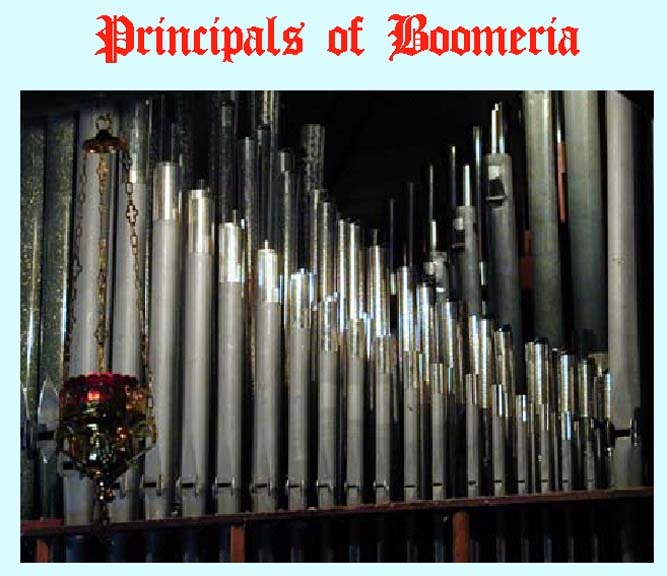
..... The Great Division of Boomeria is played on the center keyboard.
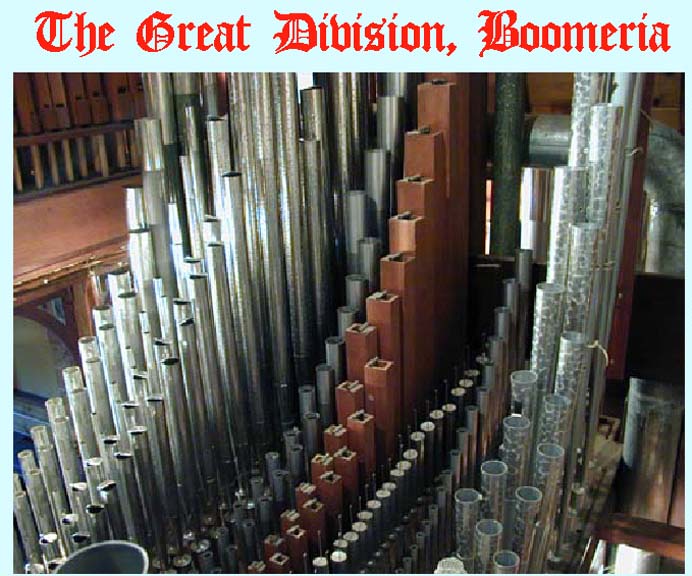
..... A dark shot of the main organ at Boomeria.
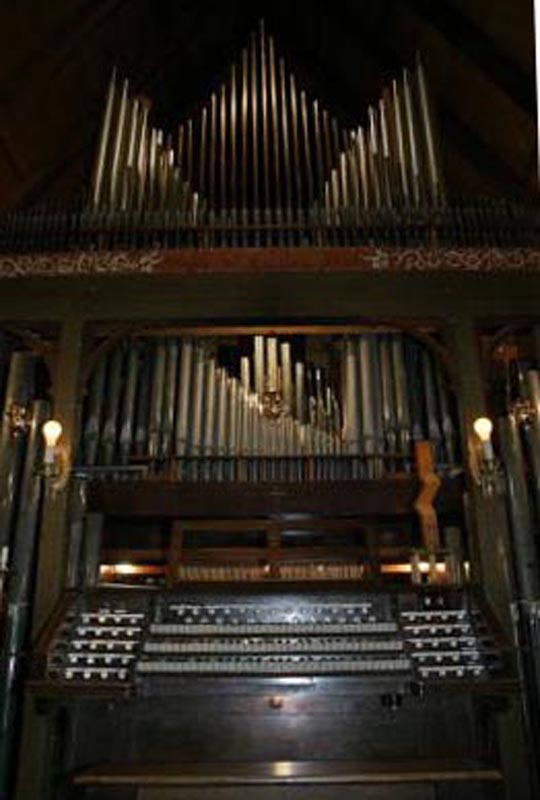
..... A nice diagram from: http://webphysics.davidson.edu/faculty/dmb/PY115/pipeorgan.jpg
